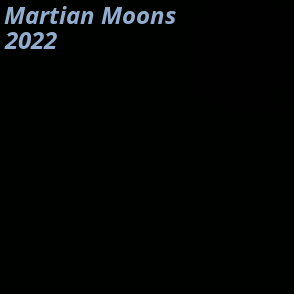|
|
|
Martian Moons 2022 shows the positions of Phobos and Deimos in relation to the Red Planet for the current apparition; specifically, throughout November and December 2022. Mars attains magnitude -1.9 at opposition on 8 December, but it's closest to Earth one week earlier with a maximum angular size of 17.2 arcseconds. This year, innermost moon Phobos has an opposition magnitude of +11.4 and Deimos glimmers at magnitude +12.5.
The two moons would be easy targets in 6-inch (15-cm) aperture telescopes were it not for the planet's glare, but Phobos and Deimos never stray more than 15 and 51 arcseconds, respectively, from the dazzling limb of Mars during the 2022 opposition. You are far more likely to spot (or image) either moon when they are at greatest elongation east or west of their parent planet. Phobos the larger of the two, has an orbital period of 7h 39m, while Deimos orbits Mars every 30h 19m.
How to use Martian Moons 2022
The app opens with the current Martian aspect presented to Earth as viewed with the inverted image of an equatorially-mounted Newtonian telescope. Users of refractors or catadioptrics with a star diagonal should press the 'Refractor/SCT View' button. You can step forward or backwards in time in increments of one hour, ten minutes, or click the 'Reset to current time' button to return to the present. If you wish to display Mars and its moons for a specific date (day/month/year format) and time, enter the desired values and click the 'Use entered date & time' button. Martian Moons 2022 uses 24-hour format Universal Time (UT), which is
synonymous with GMT.
|







